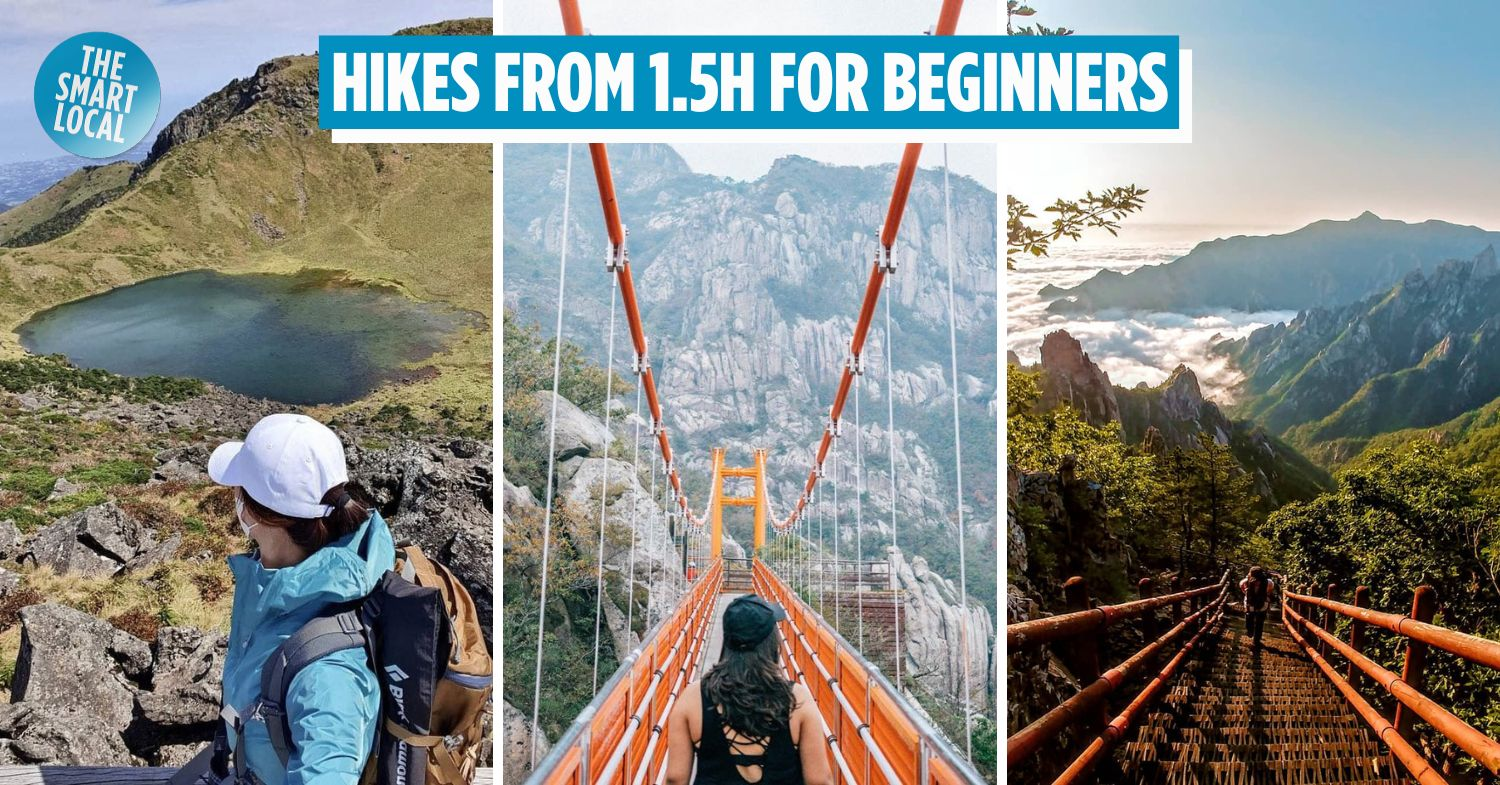Mountain hiking trails in South Korea
Korea is filled with plenty of things like KBBQ, K-pop, cosmetics… the list never ends, and that’s precisely why many people find themselves returning to the country again and again. But if you’re looking to explore off the beaten path, the mountains in Korea are a great way to see what the peninsula has to offer beyond its bustling cities.
To get you started, here are mountain hiking trails in South Korea of all difficulty levels – rated for those with average fitness levels and some hiking experience – with routes that will take as little as 1.5 hours.
Table of Contents
What you should know before hiking in Korea
Hiking in Korea is not like taking on one of our hiking trails in Singapore. While some trails take only a couple of hours to complete, most hiking in Korea is a full-day activity. This means you’ll want to start as early as possible, when the sun rises, so you’re not stuck on the mountain in the dark when the sun sets.
Use the Korea National Park Service website to plan out your hikes in advance and to check if trails are closed for maintenance. There’s also an abundance of useful information, such as trail maps, elevation, and even how steep the climb is going to be at each hiking trail.
Stick to trail paths and you’re unlikely to get lost as you hike. In the event that you do lose your way, use either Kakao Maps or Naver Maps to navigate your way out. Google Maps is not the most reliable as compared to the other 2.
The best time to go hiking is in spring and in fall when temperatures are cooler. Do note that Korea has yellow dust pollution, which is when sand from deserts in China and Mongolia get blown over. It can make it difficult to breathe during this time. Yellow dust pollution takes place in spring and sometimes in winter.
| Mountain | Region | Trail Distance | Hike Time | Difficulty | Admission Fee |
|---|---|---|---|---|---|
| Bukhansan | Seoul | 7.7km | ~5 hours | Moderate | Free |
| Suraksan | NA | ~3.5 hours | Moderate | Free | |
| Yongmasan | NA | ~3 hours | Moderate | Free | |
| Inwangsan | 1.5km | ~1.5 hours | Easy | Free | |
| Hallasan | Jeju-do | 18.3km | ~8 hours | Medium | Free |
| Seoraksan | Gangwon-do | 18.3km | ~13 hours | Hard | KRW3,500 (~S$3.41) |
| Jirisan | Gyeongsangnam-do | 32.5km | 3D2N | Very Hard | Adults: KRW1,600 (~S$1.56) Teens: KRW600 (~S$0.58) Child: KRW300 (~S$0.29) |
| Naejangsan | Jeollabuk-do | 11km (loop) | ~7 hours | Medium | KRW4,000 (~S$3.90) |
| Wolchulsan | Yeongnam Gul | 9.4km | ~6 hours | Medium | Free |
What to wear for a hike in Korea
In Singapore, you can get away with wearing whatever you’d wear to the gym – a t-shirt, gym shorts, and trainers – on a hike. But more preparation is needed when you hiking in Korea.
For one, regardless of when you plan to hike, leggings or hiking pants are a must. These would help protect your legs from scratches as you climb steeper parts of the mountain. They’re also necessary to protect yourself against windchill. It’s only natural that temperatures dip the higher you climb, and the wind that comes from being at a higher altitude will be cold.
It’s for that same reason that you’d want to bring a light windbreaker with you. You can use it not just as protection against the cold, but against harsh UV rays as well. If you’re planning to hike in summer and don’t feel that a windbreaker is necessary, bring UV sleeves that protect your arms from getting sunburnt. Bring along a hat and a pair of sunglasses as well to prevent sun damage.
Another must-have is a pair of proper hiking shoes. Terrains can get slippery, and sneakers or trainers won’t have enough grip to keep you from slipping off steep pathways. Hiking shoes or boots also have more cushioning on the sole to soften the impact on your knees as you hike down. Cushioning around the ankle also lessens the likelihood of sprains around your ankle.
What to pack for a hike in Korea
Water, of course. A bottle that can hold 1L should suffice, as most hiking trails in Korea have water points along the trail for you to refill. You can also bring along isotonic powders or drinks to help rehydrate faster after a hike.
Mountain hiking can take up a good portion of your day so you’ll want to take snacks along with you like protein bars, nuts, and chips. In Korea, the hiking snack of choice is usually kimbap, a roll made of seaweed and rice, and stuffed with fillings like pickled daikon, omelette, cucumber, and a protein like tuna or ham.
You can also bring along hiking poles for stability, UV sleeves to prevent sun damage, and mosquito repellent. Do bring along a plastic bag to stow your rubbish, as trash cans are few and far between, and littering is a definite no-no. It’s a good idea to bring cash too, to buy snacks and drinks from sellers along some hiking trails.
Camping along hiking trails in Korea
You can pitch tents along hiking trails in Korea but it’s not recommended, as there could be wild animals around. You’re also not allowed to light fires, which may be an issue for your comfort if you’re hiking during colder season.s
Instead, it’d be wise to book a spot in a mountain shelter, which are available at Jirisan, Seoraksan, Deokyusan, and Sobaeksan National Parks. These shelters are basically dormitories, split up by gender, for you to wash up, rest, and have a snack before continuing on your journey.
Bookings can be done on the Korea National Park Service website. Select which park you’ll be visiting, then the shelters you’d like to stay at. It’s best to check trail maps to see where each shelter is located so you can plan your stays according to how far you’re trekking for the day. Reservations are KRW12,000/pax (~S$11.74) to be paid in person using a credit card.
Hiking etiquette in Korea
Remember that mountain hiking trails are shared public spaces, so you’ll want to make sure you respect not just the people around you, but nature as well.
With that in mind, you’ll want to stick to the right side of any pathways for smoother traffic flow. If you come across a group of hikers, those ascending the mountain should step aside to let those coming down to move off first.
Many Koreans go on hikes to escape the hustle and bustle of the city, so making excessive noise would be considered rude. Holding a conversation is completely alright, but don’t scream or shout. You also shouldn’t play music out loud at any time, even at pit stops along the way.
– Within Seoul –
1. Bukhansan, Seoul
Easily accessible by bus
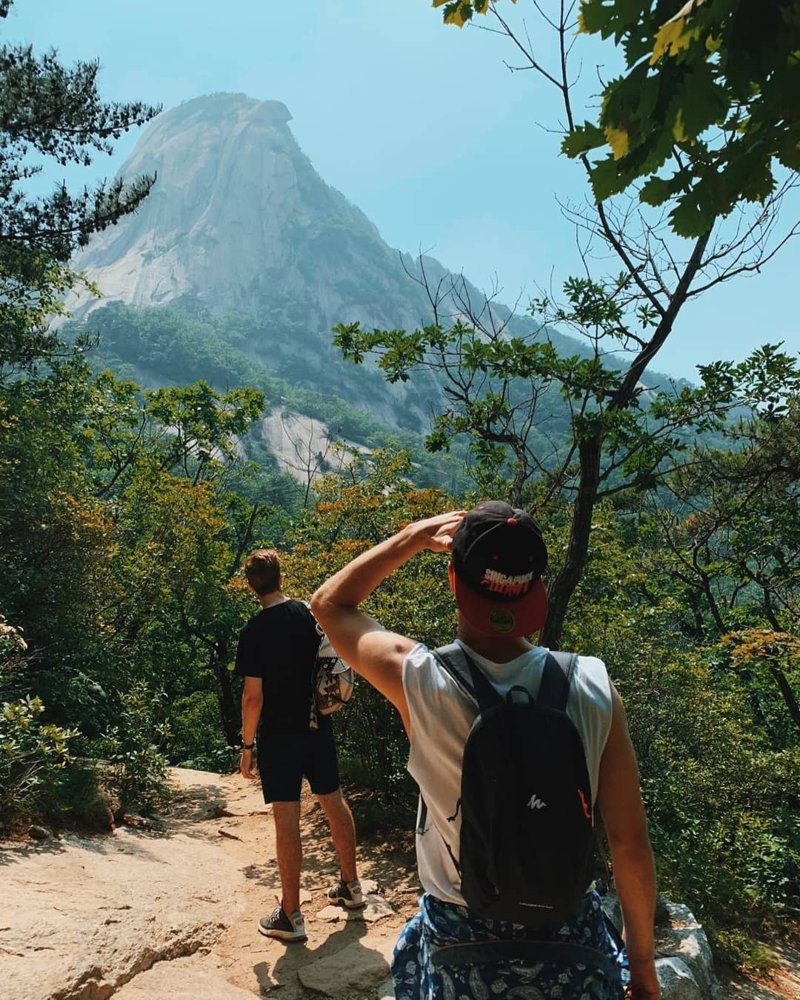
Image credit: @errrska via Instagram
Those looking for a quick and easily accessible hike can head to Bukhansan National Park which sits right in the heart of Seoul. With the trailhead easily accessible by bus, you can quickly make your way near the top to catch a panoramic view of the cityscape as well as the surrounding hills.
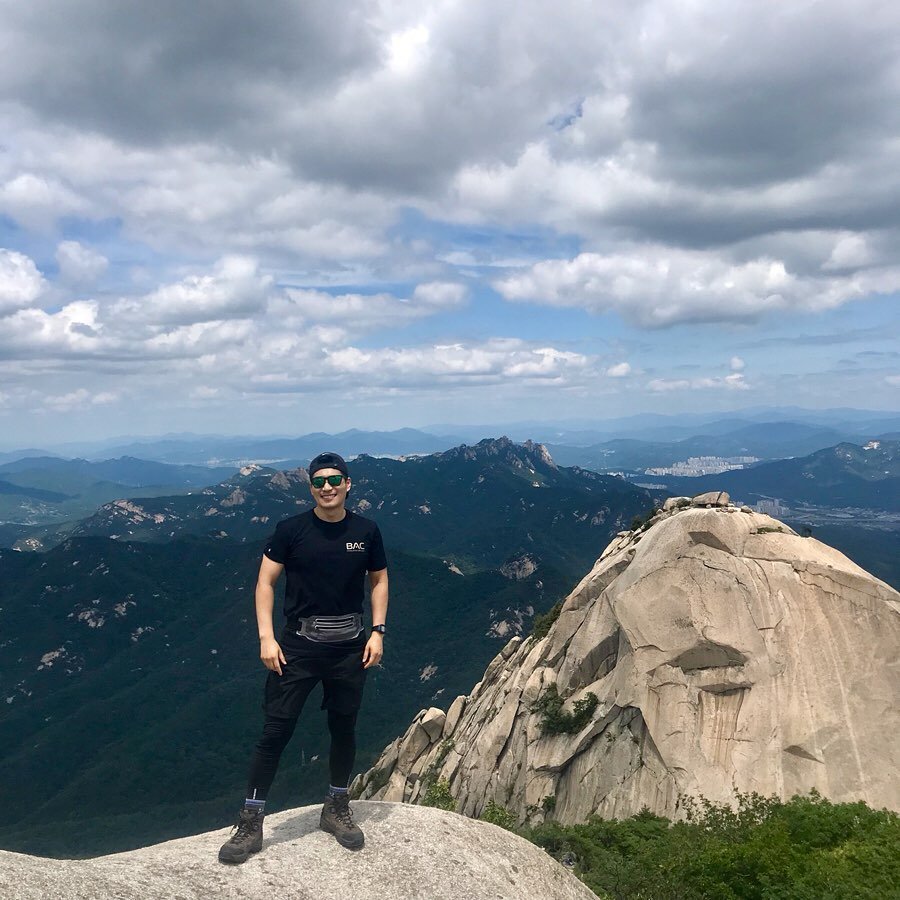
View from the peak.
Image credit: @bukhansan_love via Instagram
The peak Baegunbong sits at an elevation of 836.5m, and with a clear path and stairs lining parts of the route which makes this hike pretty doable, albeit tiring.
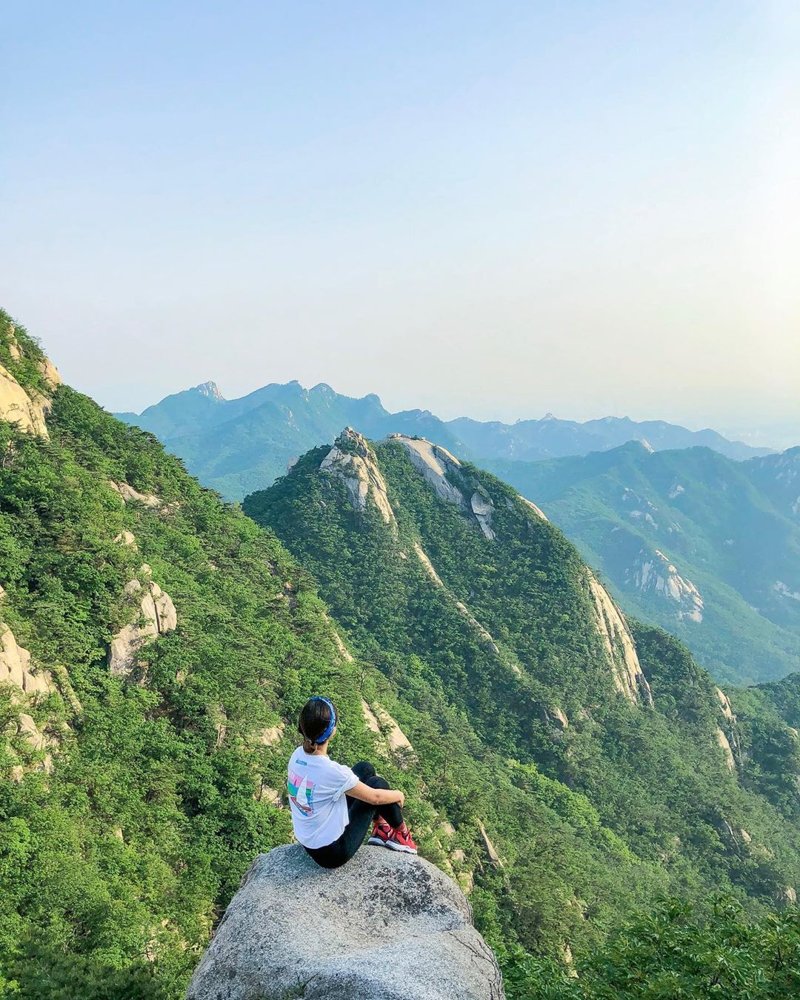
On the way to the peak.
Image credit: @leessssseul via Instagram
Although getting a pair of hiking shoes is recommended, there are plenty of people that head up in sports shoes. If you don’t have a pair of good trainers, bring some extra cash along to the trailhead as there are a bunch of stores selling hiking equipment like footwear and hiking sticks.
Pro-tip: Since Bukhansan is widely popular among locals because of its proximity to the city centre and accessibility, it’s best that you try to head there during weekdays instead as it’s immensely crowded during the weekends.
Check out the Bukhansan trail map.
Hike difficulty: Moderate
Distance: 7.7km
Time needed: ~5 hours
Admission: Free
Address: 262 Bogukmun-ro, Jeongneung-dong, Seongbuk-gu, Seoul, South Korea
Park hours: Apr-Oct 4am-5pm | Nov-Mar 4am-4pm
Getting there: Take Line 3 to Gupabal Station (Exit 1 or 2) and take buses 34, 704 or 720 to Bukhansanseong Fortress Entrance (북한산성) station.
2. Suraksan, Seoul
Quiet hike with a view of Seoul’s outskirts
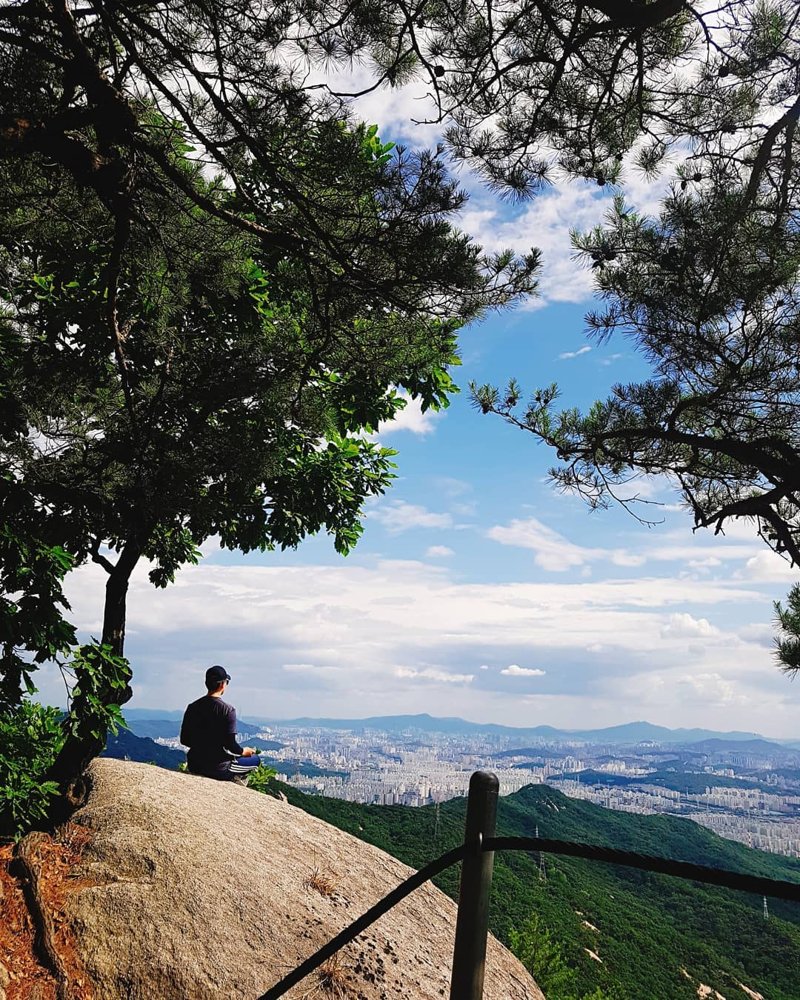
Image credit: @kangsik9411 via Instagram
Not to be confused with Seoraksan (#6), Suraksan is a lesser-known mountain in the outskirts of Seoul, perfect for those who want to avoid the crowd. At the peak, you’ll be 638m high above sea level with a great view of the rolling hills around the mountain.
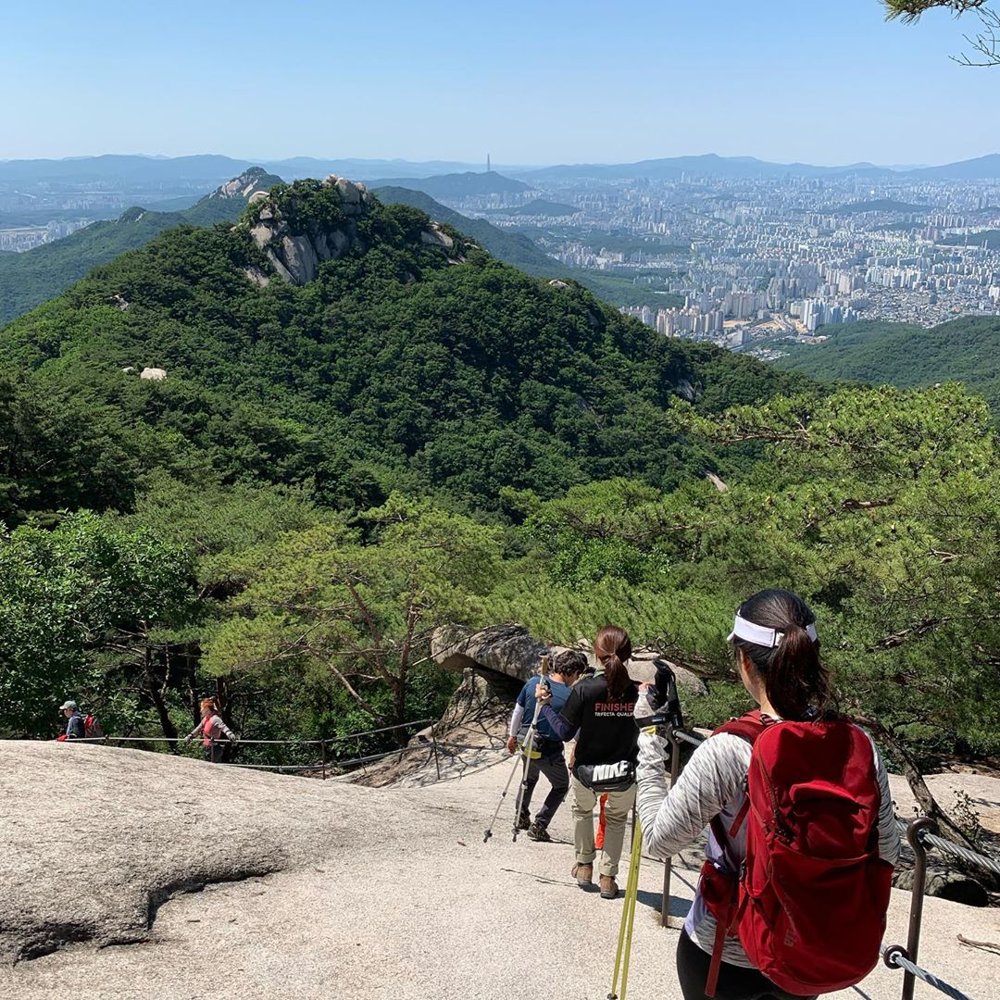
Image credit: @ontr2015 via Instagram
There are a bunch of routes you can take to explore the mountain, however, one of the most popular ones begins at Danggogae Station (Exit 4) and ends at Suraksan Station. There are also attractions along the way which include Hangnimsa Temple, filled with colourful lanterns and chiming bells.
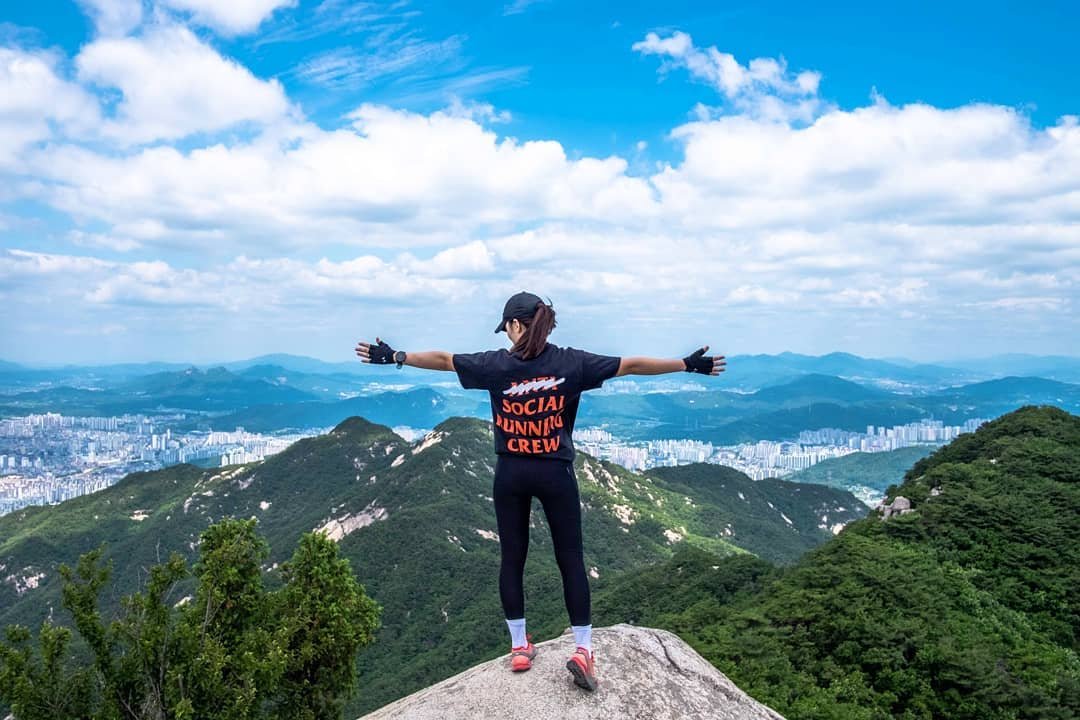
Image credit: @cynthia33133 via Instagram
Pro-tip: I slipped and dropped my phone while hiking the icy paths of Suraksan in the winter – oops. If it’s been snowing regularly before your hike, bring a pair of crampons (slip-on spikes for your shoes) to avoid slipping and falling.
Hike difficulty: Moderate
Distance: NA
Time needed: ~ 3.5 hours
Getting there: Take the Seoul Metro to Danggogae Station (Line 4). Take exit 4, follow the Seoul Trail Sign and then “Top of the Suraksan (Mt.)”. Getting to the trailhead is a bit hard as you’d have to cut through residential areas. If you get lost, ask the friendly residents for directions.
3. Yongmasan, Seoul
Suitable for beginners up for a challenge
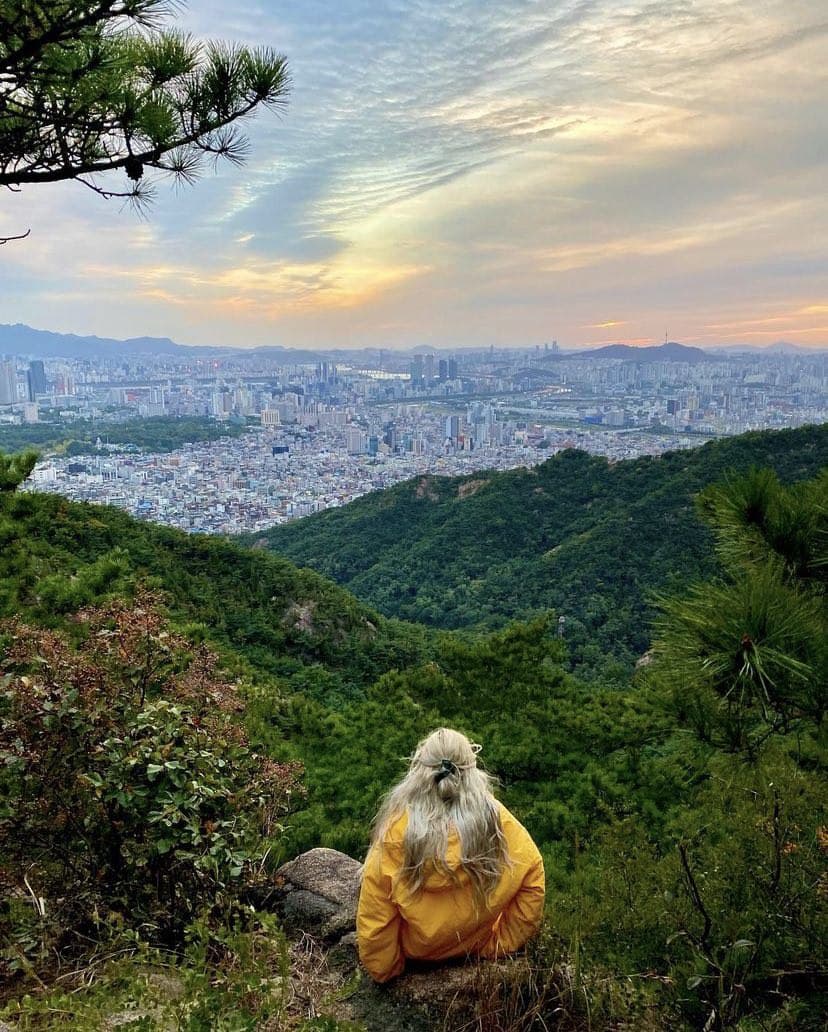
Image credit: @0.banna via Instagram
If you’re looking for a moderately challenging hike that’s still beginner friendly, head to the 348m-high Yongmasan. As a reference, this is approximately 2-3 times the height of Singapore’s highest peak at Bukit Timah Hill.
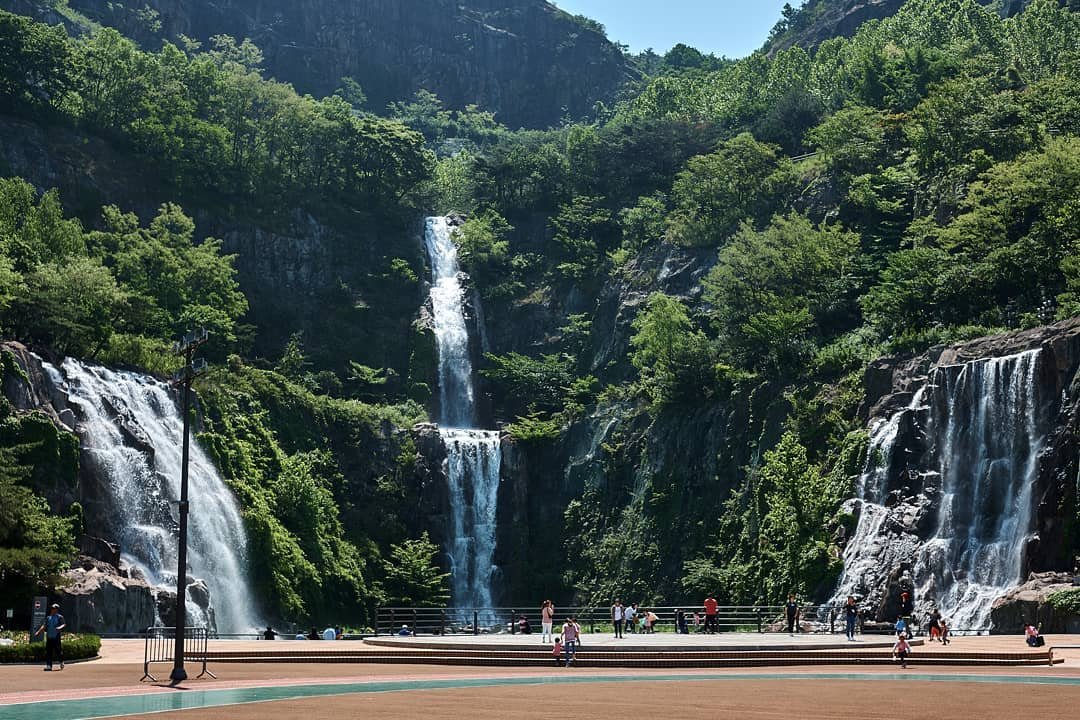
There’s a waterfall near the trailhead.
Image credit: @jer.g.desjardins via Instagram
Although technically not a mountain, this hill has a great hike worth doing if you’re visiting Seoul. On the way up, there are also lookout points with amazing views of the city to keep you pumped till you reach the end. The terrain starts easy but gradually becomes steeper and more rugged as you reach the top.
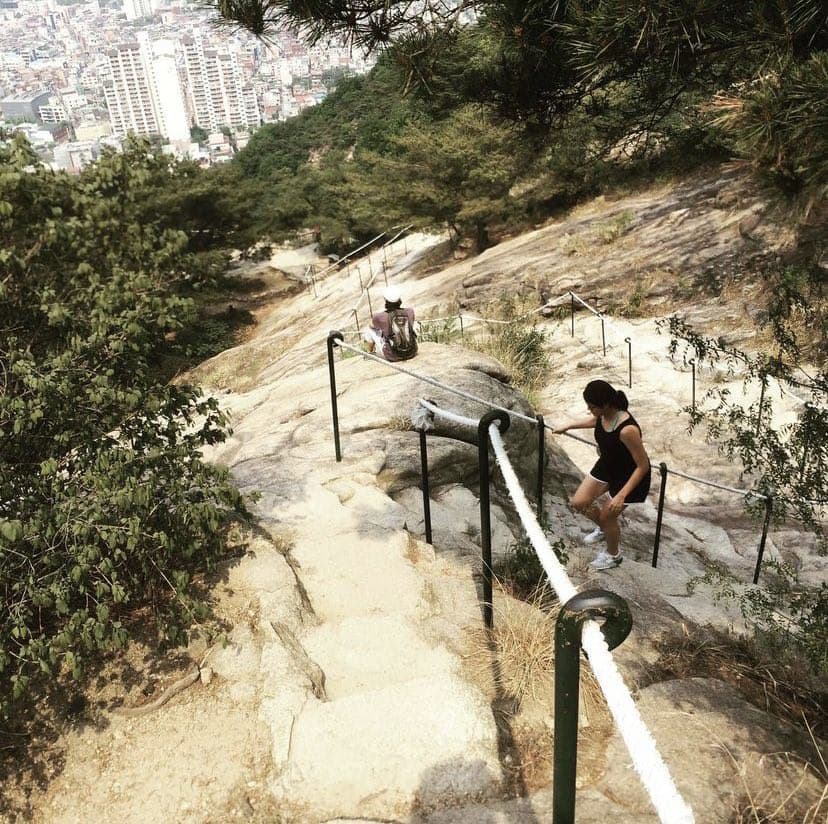
Image credit: @ohanabxt via Instagram
Pro-tip: Make sure you’ve got a data sim card to do a quick Google translate since most of the direction signs are in Korean.
Hike difficulty: Moderate
Distance: NA
Time needed: ~3 hours
Admission: Free
Address: 250-12 Yongmasan-ro, Myeonmok 4(sa)-dong, Jungnang-gu, Seoul, South Korea
Park hours: Tue-Sun, 24 hours (Closed on Mondays, Public Holidays & Observatory Days)
Getting there: From Yongmasan Station (Line 7) Exit 2, walk 15 minutes towards Yongmasan Waterfall Park. The trailhead is right next to the playground with a basketball court.
4. Inwangsan, Seoul
Hike along an old fortress wall
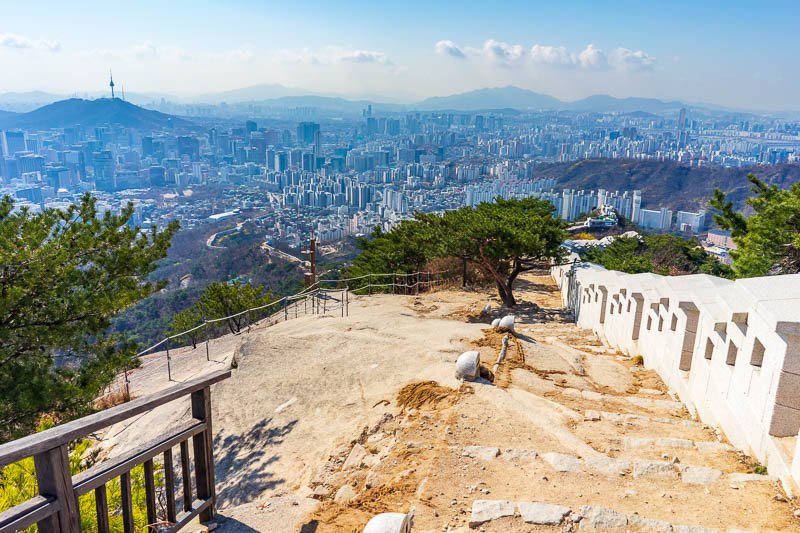
Image credit: FalseGuide
Although it has the lowest elevations on the list, Inwangsan, with its highest peak at 338m, has a route packed with lots to see.
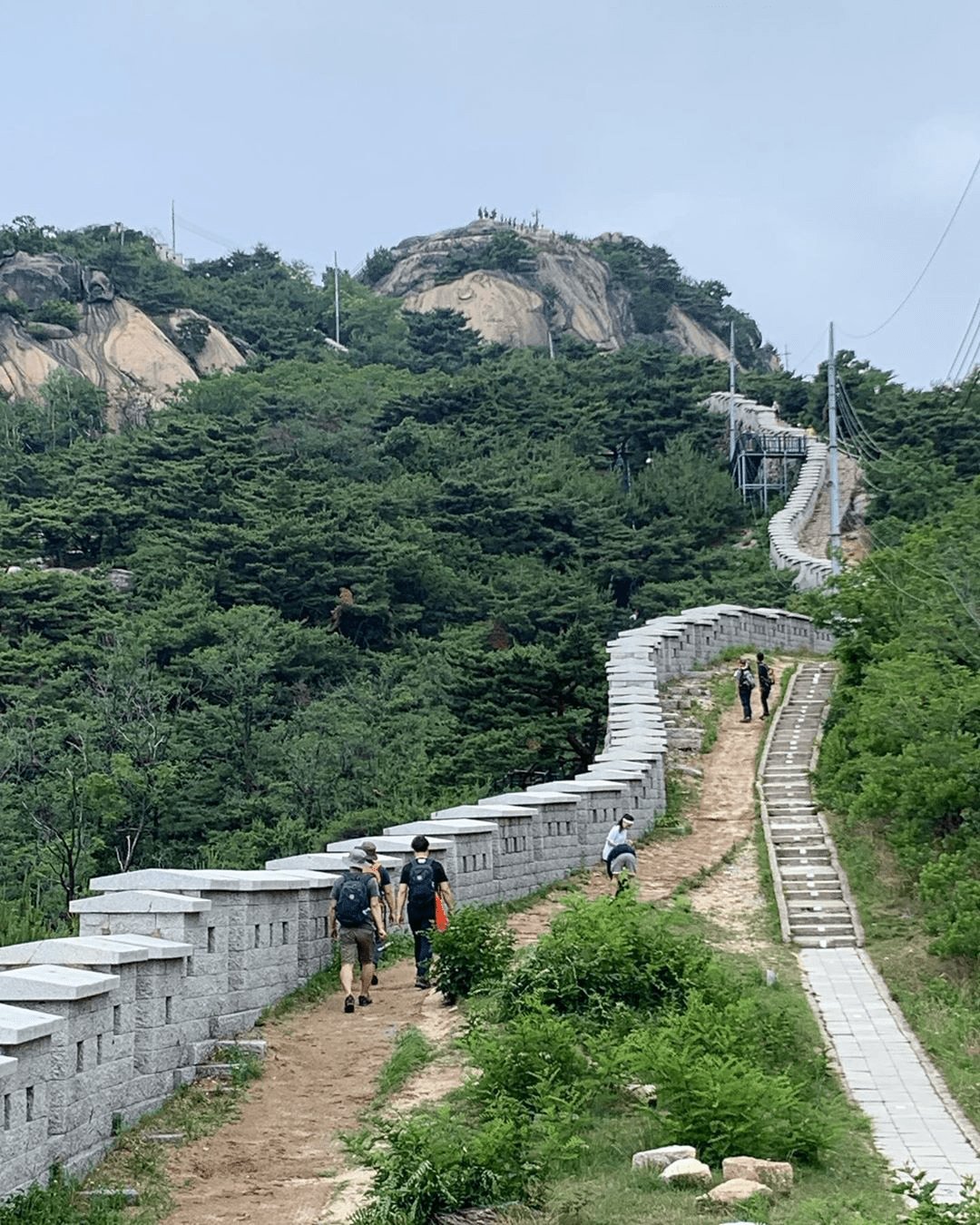
Image credit: @sataphonia via Instagram
The trail takes you along the ancient fortress wall, and along the way, you’ll be able to spot landmarks like Gyeongbokgung Palace, Namsan Park, and even the Blue House, which is the president’s house.
Feel free to snap away on your camera, but avoid taking shots with the Blue House in it as there are patrolling officers that’ll stop you for security reasons.
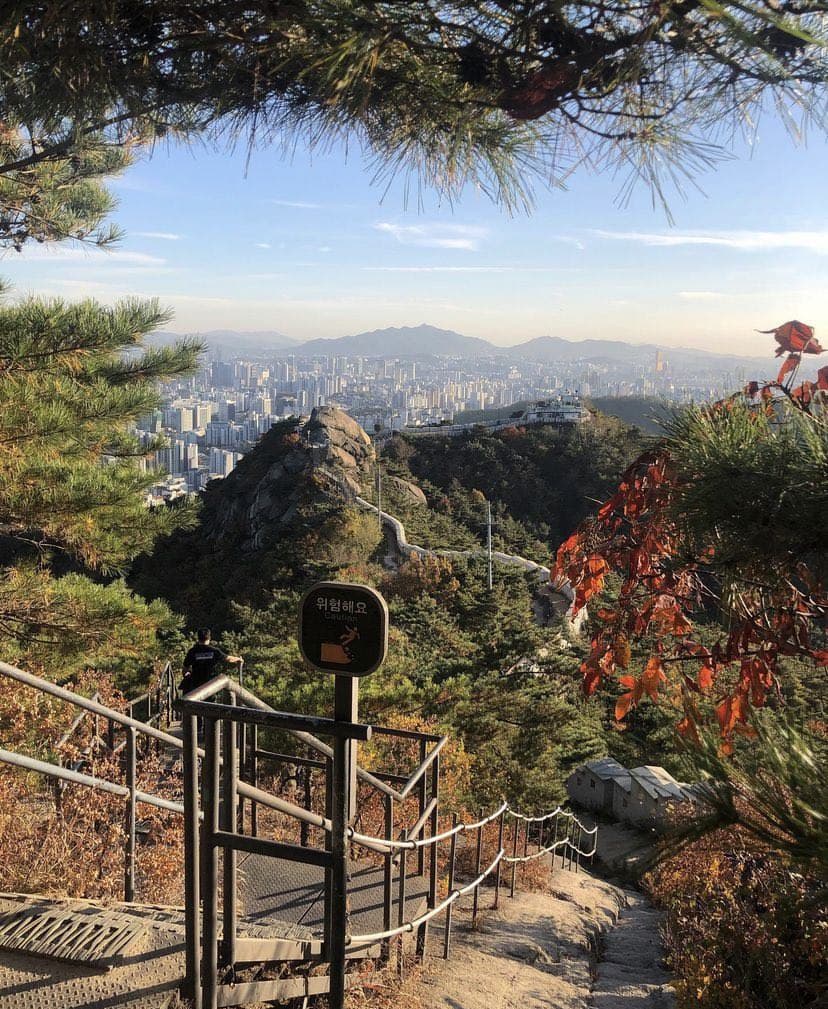
The route is easy with steps and a marked trail but can get pretty exhausting near the top.
Image credit: @mmxseoul via Instagram
Check out the Inwangsan trail map.
Hike difficulty: Easy
Distance: 1.5km to the peak
Time needed: ~1.5 hours
Admission: Free
Address: 29, Inwangsan-ro 1-gil, Jongno-gu, Seoul, South Korea
Park hours: 24 hours, Tue-Sun (Closed on Mondays)
Getting there: From Dongnimmun Station (Line 3) Exit 2, and take bus 1020, 7212 or 7022 to Jahamun bus stop. Cross the road on your left and walk uphill all the way, then take the Inwangsan Jarak-gil trail until you reach a police post. The wooden stairs nearby is the trailhead.
– All around Korea –
5. Hallasan, Jeju-do
Beautiful crater lake at the top
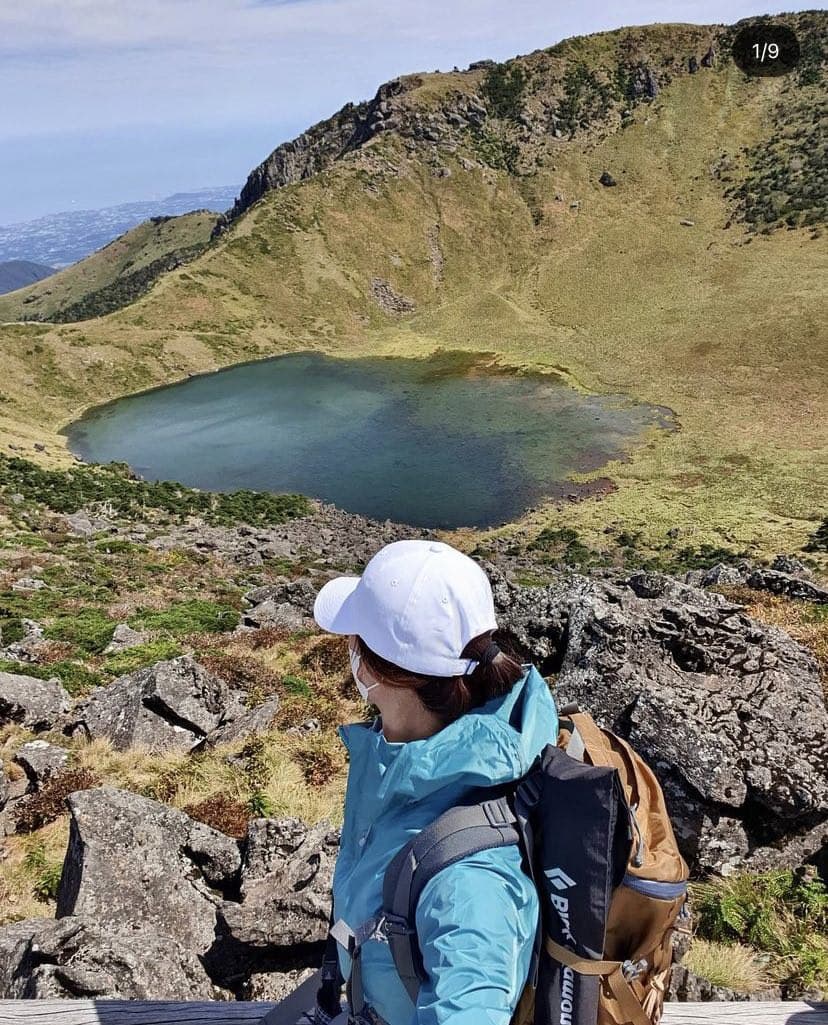
Image credit: @world.everywhere via Instagram
If “go big or go home” is your mantra, then head straight to Hallasan, the second-highest mountain in Korea, on the island of Jeju. Standing at 1,950m, the majestic mountain is actually a dormant volcano that houses a beautiful crater lake at the top.
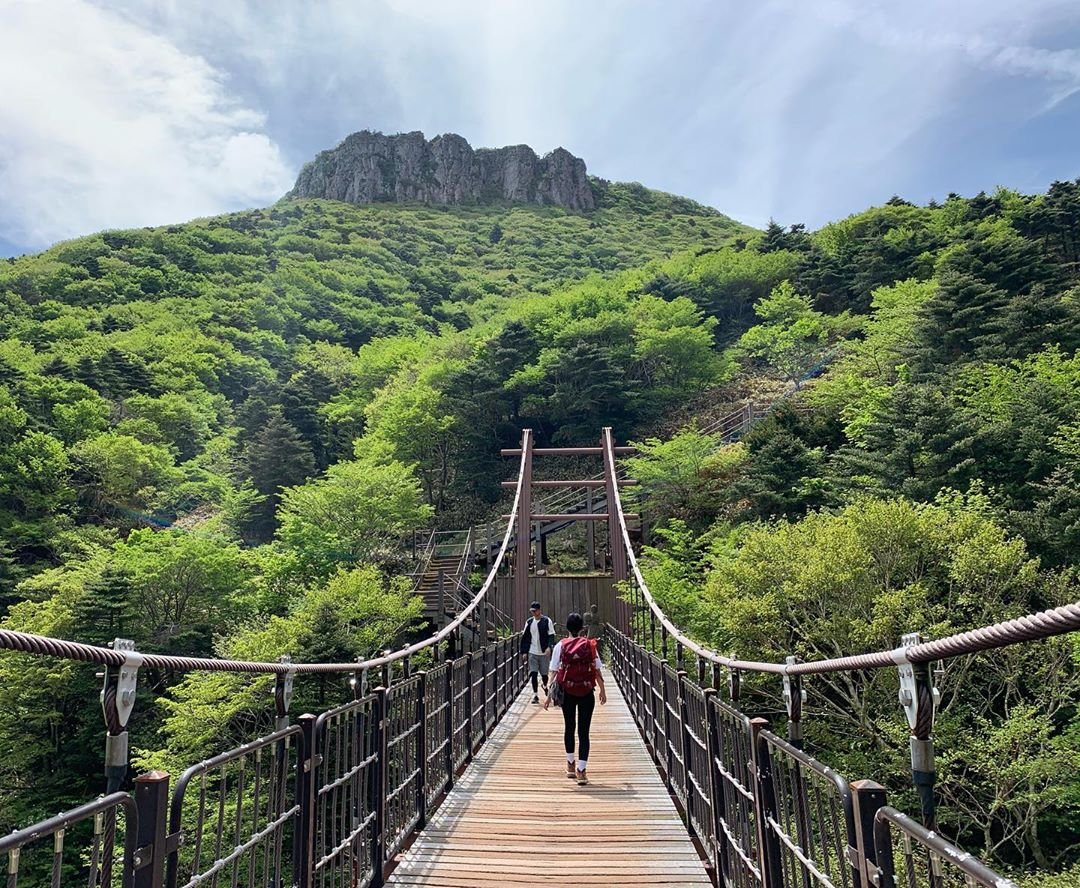
Image credit: @serimi_ via Instagram
While this mountain is physically tiring to climb, it’s technically not difficult as the path is clear and well-developed with stairs covering a large portion of the trail. There are 2 trails leading up to Baekrokdam, a crater lake at the summit:
- Gwaneumsa – 8.7km one way
- Seongpanak – 9.6km one way
The best way to hike Hallasan is a combination of these 2 routes – head up Seongpanak and down Gwaneumsa. The former is easier to hike up, with gentler elevation and the latter has the more magnificent views, which you’ll be able to appreciate more on the way down.
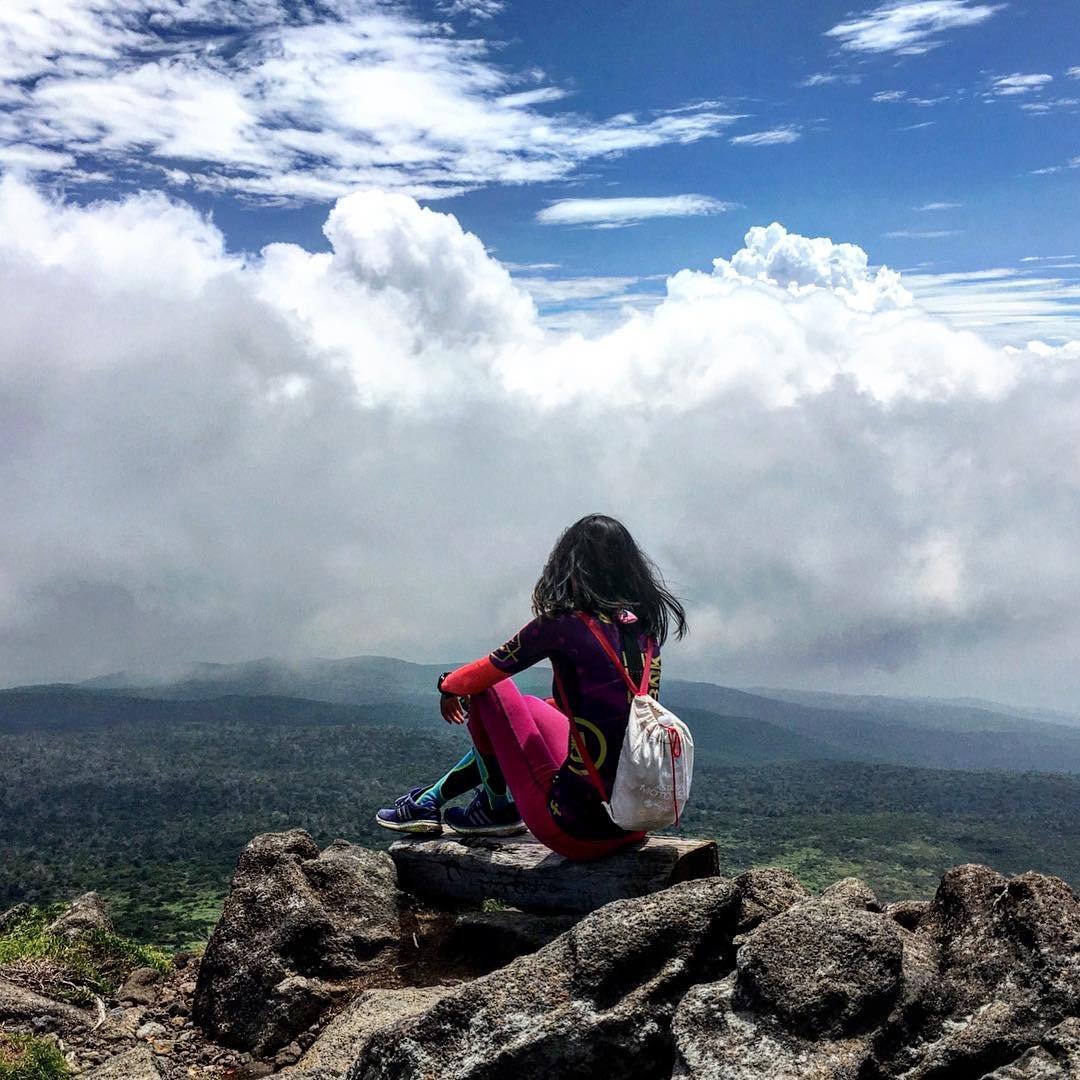
Image credit: @aigerim.nurgaliyeva via Instagram
When you reach the peak, get a photo of yourself there as proof, which you can upload onto the Jeju IoT app (App Store | Google Play) for a free certificate of achievement.
Check out the Hallasan trail map.
Note: The Seongpanak and Gwaneumsa trails require prior reservation to prevent overcrowding.
Make a reservation for Hallasan trails.
Hike difficulty: Medium
Distance: 18.3km
Time needed: ~8 hours
Admission: Free
Address: 2070-61, 1100-ro, Jeju-si, Jeju-do
Park hours: 24 hours, Daily
Getting there: From Jeju Bus terminal, take bus 281 and alight at Seongpanak trailhead. From Segwipo, take bus 182 and alight at Seongpanak trailhead.
6. Seoraksan, Gangwon-do
Deemed the most beautiful mountain in Korea
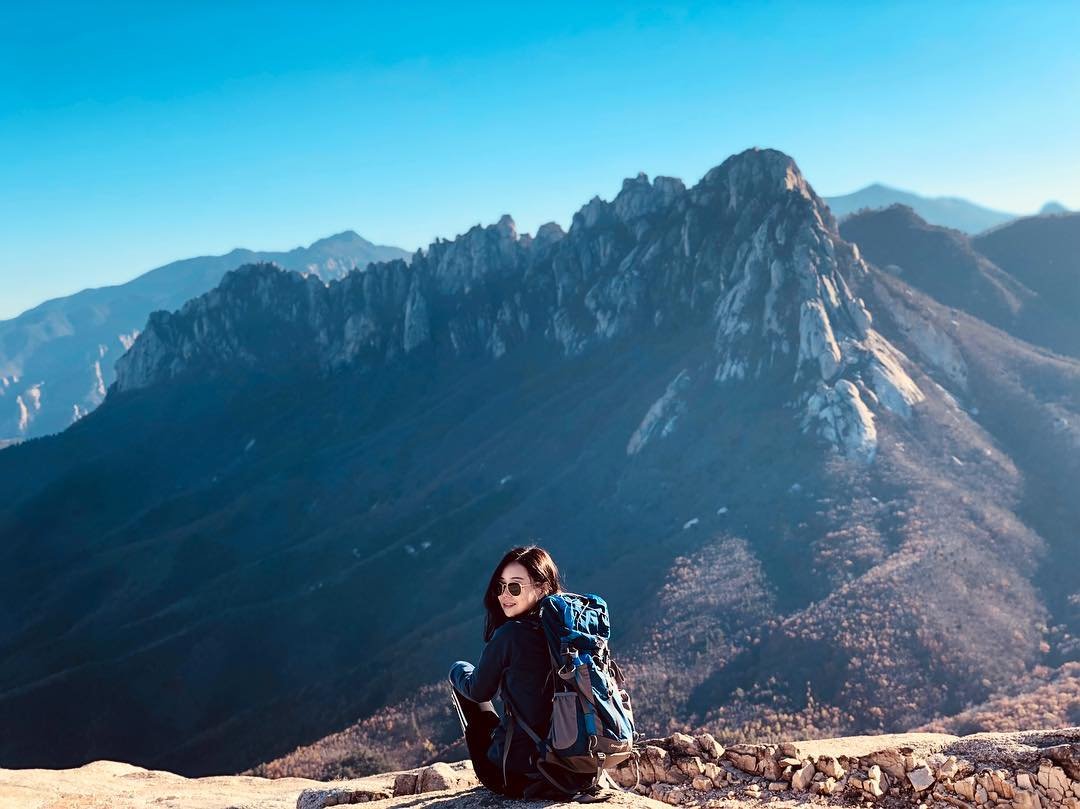
Image credit: @be_a_maan via Instagram
Proclaimed by Koreans to be the most beautiful mountain in South Korea, Seoraksan in Gangwon-do will probably give you the most scenic experience among everything on this list.
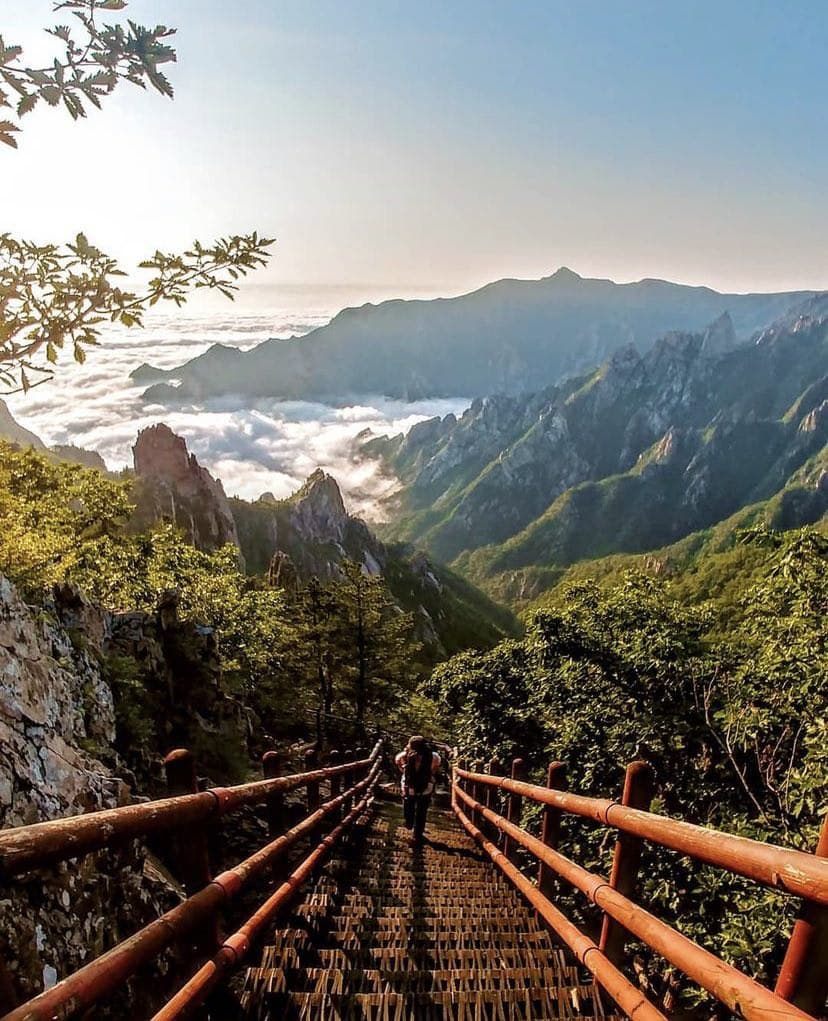
Image credit: @eleven_tang via Instagram
Many trails branch out from the visitor centre, which brings you to various attractions around the park. But for the adrenaline junkies out there, head to the peak of Daecheongbong which sits 1,708m high.
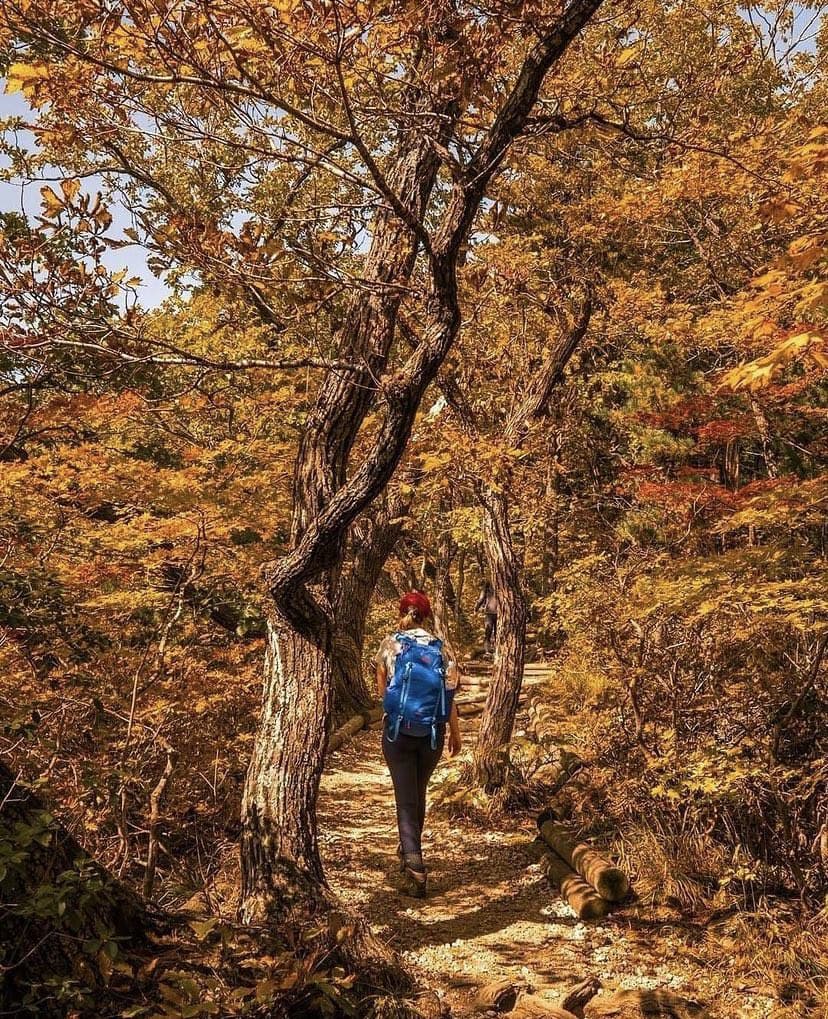
Image credit: @trazy_korea via Instagram
Depending on which route you choose, you’d get to encounter sites such as caves, valleys and clear streams. The hike will take around 13 hours so make sure you start early. For those who wish to cover the route in 2 days instead, you can pre-book a slot in one of the shelters to make camp.
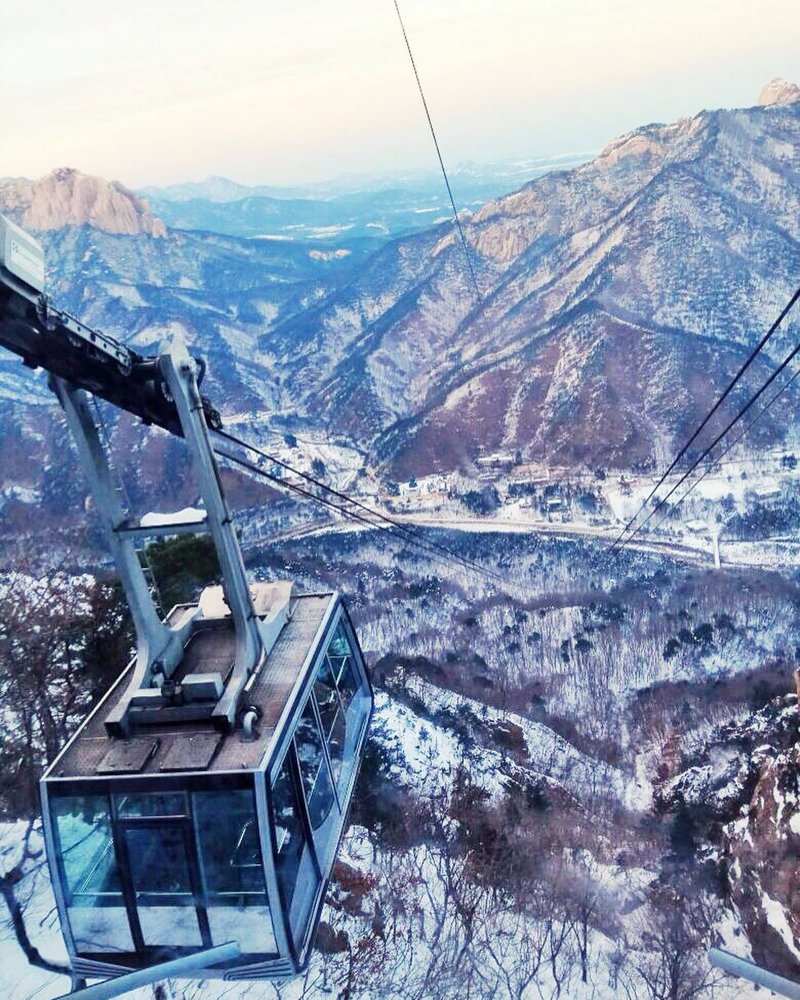
Seorak Cable Car (KRW15,000/pax, ~S$14.63).
Image credit: @stephie_kwan via Instagram
Other attractions here include Ulsanbawi Rock, Sinheungsa Temple, and Seorak Cable Car – which takes you to the peak, Gwongeumseong Fortress, which is the former site of a castle.
Hike difficulty: Hard – especially near the peak
Distance: 18.3km
Time needed: ~13 hours
Admission: KRW3,500/pax (~S$3.41)
Address: 43, Seorak-dong, Sokcho Si, Gangwon-Do
Park hours: 24 hours, Daily
Getting there: From Seoul, head to the Dong-Seoul Bus terminal and take an intercity bus to Sokcho Intercity Bus Terminal, then take bus 7 or 7-1 to Seoraksan National Park.
7. Jirisan, Gyeongsangnam-do
For those seeking a challenge
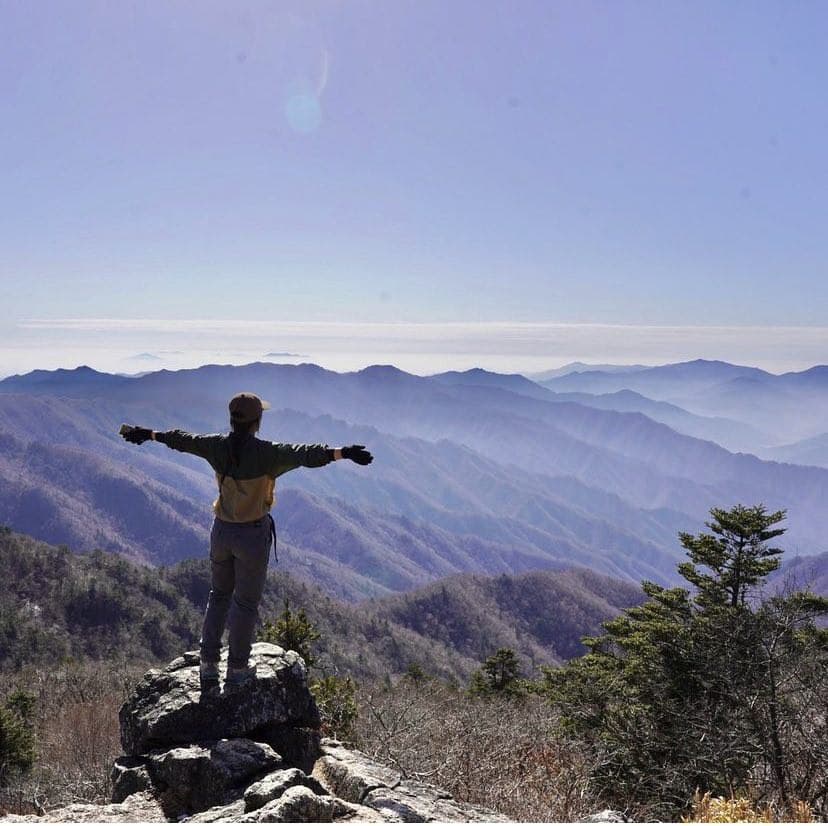
Image credit: @haechuri via Instagram
For those looking to completely immerse themselves in the wild, head to Jirisan in Gyeongsangnam-do. It is the largest national park in the whole of South Korea and stretches across 3 provinces and 5 cities.
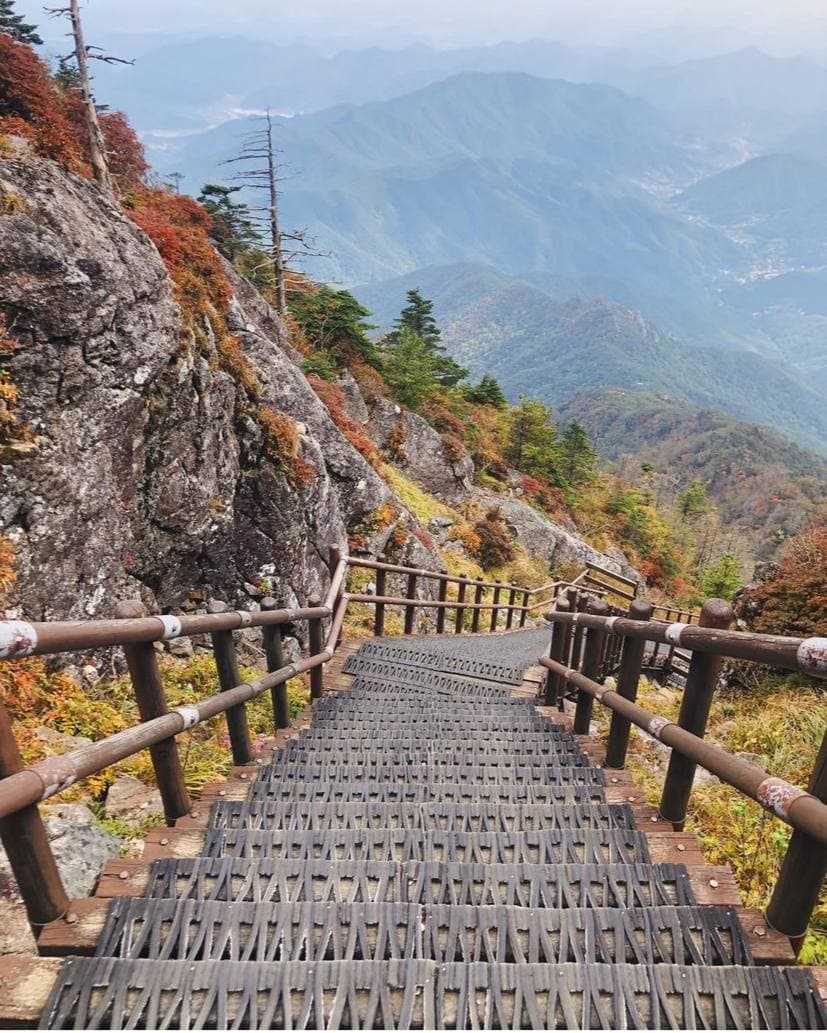
Image credit: @thekorealistv via Instagram
If you’re up for a challenge, pack your camping gear and head for the Main Ridge Course that stretches across 32.5km and requires at least 3 days and 2 nights. It’s the most popular course among hikers and takes you across multiple ridges, and through the peak of the mountain range of Cheonwangbong (1,915m).
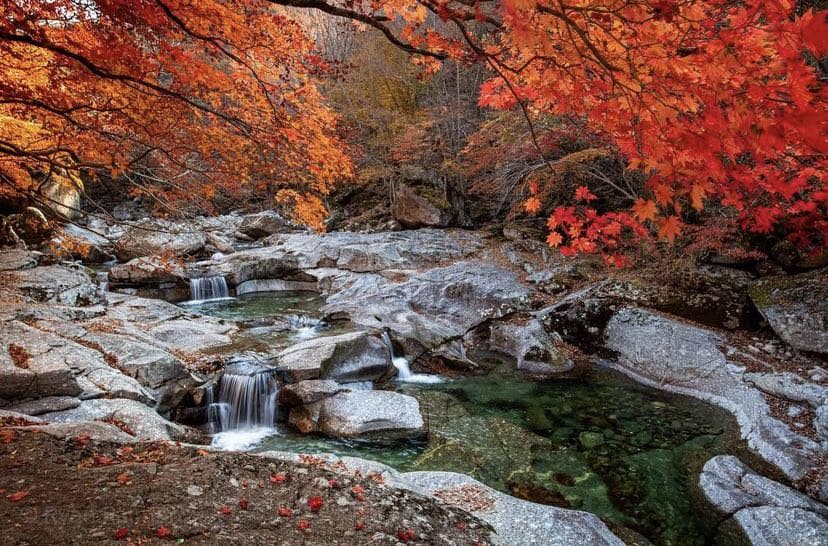
Image credit: @ryan.adventures_ via Instagram
If camping isn’t your cup of tea, or perhaps reminds you too much of BMT, there are also plenty of day hikes you can explore.
Pro-tip: Hiking communities are very popular in Korea. If you are worried about heading on a long hike without a guide, consider looking out for scheduled trips in groups like Climbing in Korea, Indigo Hill, and Must Go Korea.
Note: To ensure the safety of hikers, hiking from sunset to 2 hours before sunrise is prohibited.
Hike difficulty: Very Hard (Main Ridge Hike)
Distance: 32.5km
Time needed: 3D2N
Admission:
Children (6 and under) and Seniors (65 years and up): Free
Adults: KRW1,600 (~S$1.56)
Teens: (13-18 years): KRW600 (~S$0.58)
Child (7-12 years): KRW300 (~S$0.29)
Address: 43, Seorak-dong, Sokcho Si, Gangwon-Do
Park hours: 24 hours, Daily (Closed annually between 15th February – 15th May and 15th November – 15th December for park maintenance)
Getting there: Jirisan is best accessed by car.
8. Naejangsan, Jeollabuk-do
Best Autumn foliage
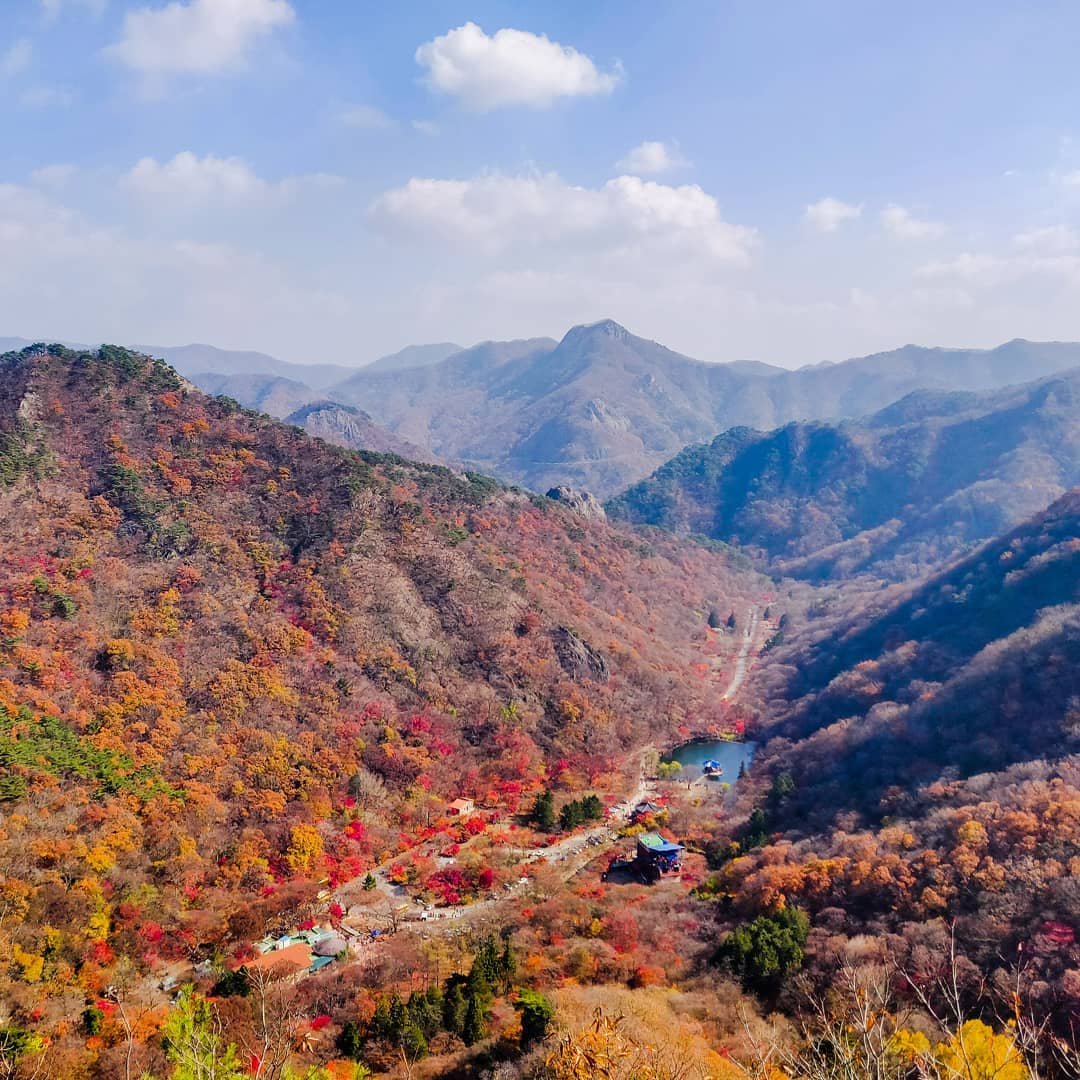
Image credit: @________him via Instagram
If you’re headed to South Korea in the autumn, make sure to visit Naejangsan for its beautiful autumn foliage. The entire mountain bursts into hues of red and orange around September to October.
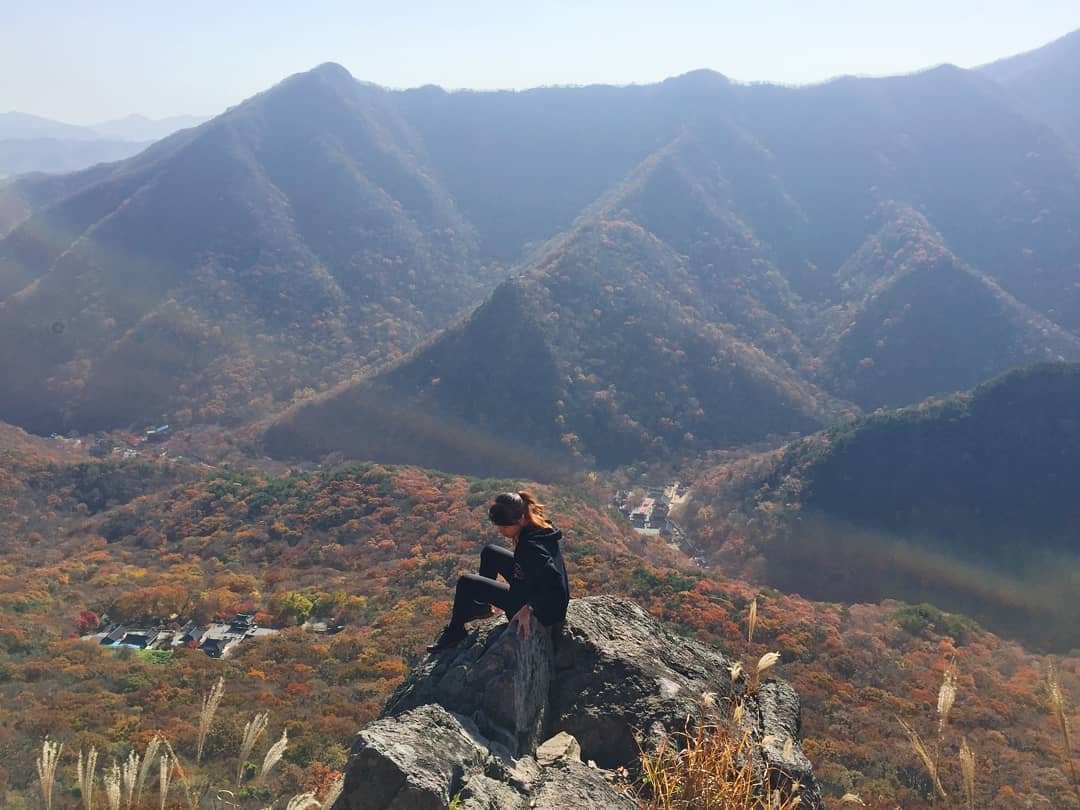
Image credit: @keziasdf via Instagram
One of the most popular routes here is the 8-peak hike along the ridges of the mountains, which passes by all the peaks, including the highest one of Sinseongbong (763m).
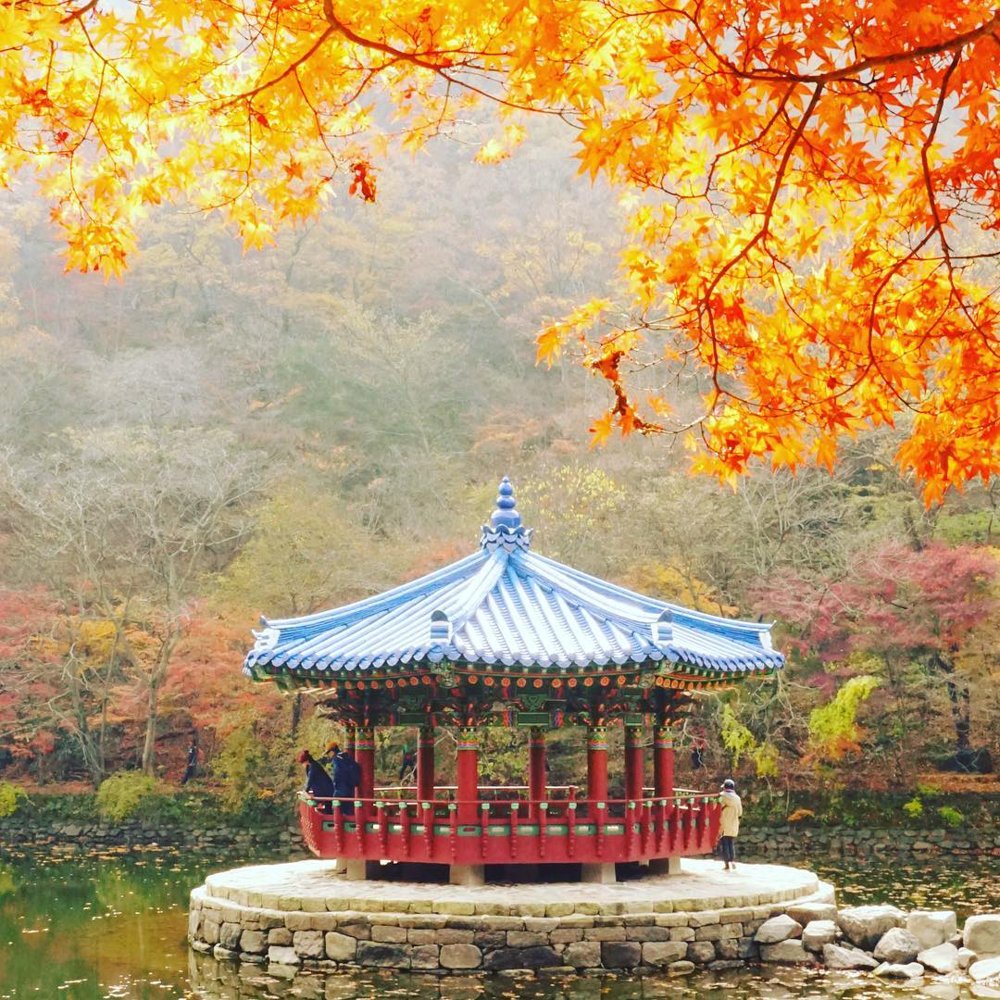
Uhwajeong Pavilion.
Image credit: @darisuduttaman via Instagram
Other scenic things to do and see in the area include the Baekyangsa Walking Trail Course (8.5km, one-way), as well as visiting the Naejang Temple and Uhwajeong Pavilion.
Check out the Naejangsan trail map.
Hike difficulty: Medium
Distance: 11km, loop trail
Time needed: ~7 hours
Admission: KRW4,000/pax (~S$3.90)
Address: 328, Naejanghoban-ro, Jeongeup-si, Jeollabuk-do
Park hours: 7am-6pm, Daily
Getting there: From Jeongeup Station, take bus 171 to the bus terminal at the last stop (30min). To get to Jeongeup from Seoul, take the SRT from Suseo station in Seoul to Jeongeup station. One-way tickets are KRW48,700/pax (~S$47.52).
9. Wolchulsan, Yeongnam Gul
Suspended cloud bridge
Located in the Southern part of South Korea, Wolchulsan is a relatively unknown mountain rarely visited by foreigners, perfect for those who are looking for something off the beaten path.
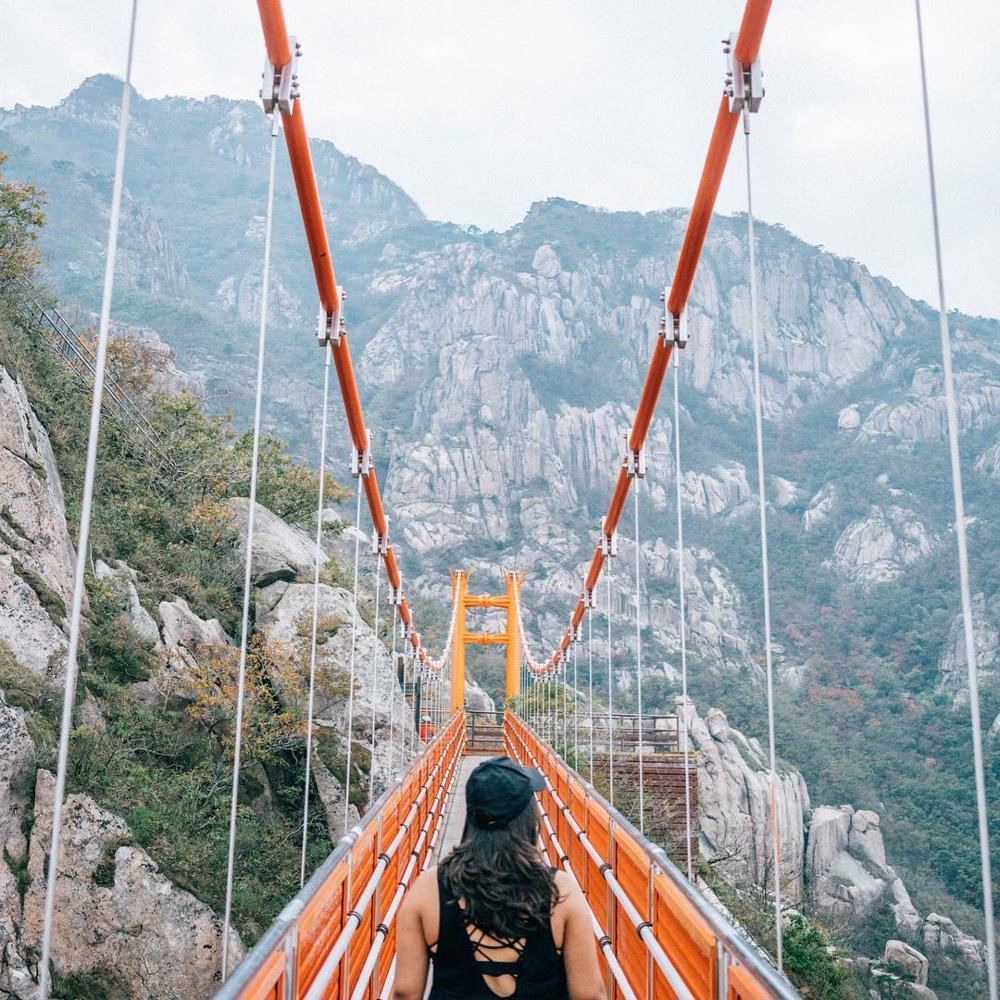
Image credit: @thereshegoesagn via Instagram
The mountain’s main draw for many hikers is its Gureumdari Bridge, or cloud bridge – a vibrant red suspended structure standing out from the terrain’s rocky surface.
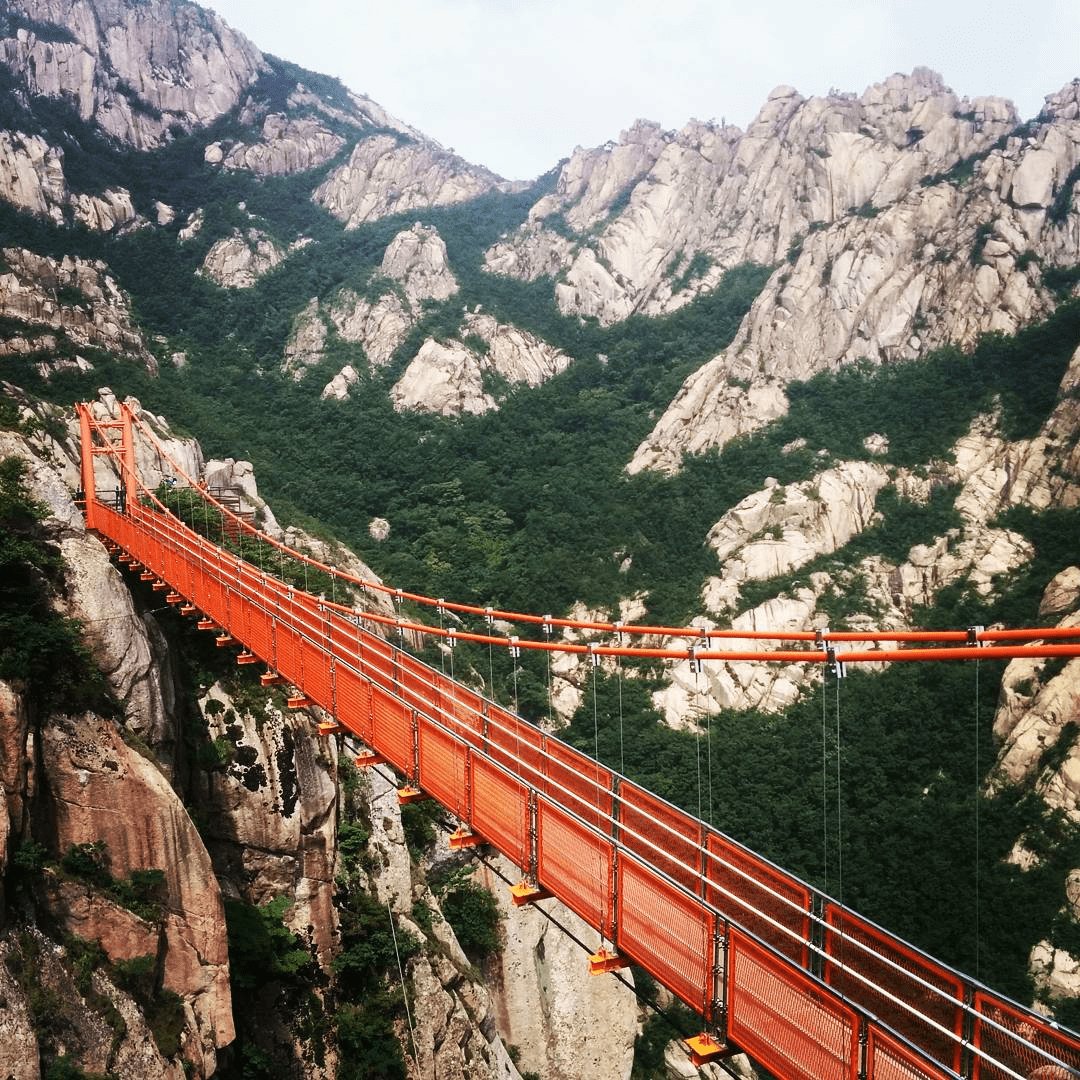
Image credit: @2talltayla via Instagram
For those who want to cover the highest peak, Cheonhwangbong at 809 metres, as well as Gureumdari Bridge, head for the Mountain Ridge Trail. It stretches 9.4km and takes you through these main attractions as well as Gujeongbong Peak, Eoksaebat (Pampas Grass Field), and Dogapsa Temple.
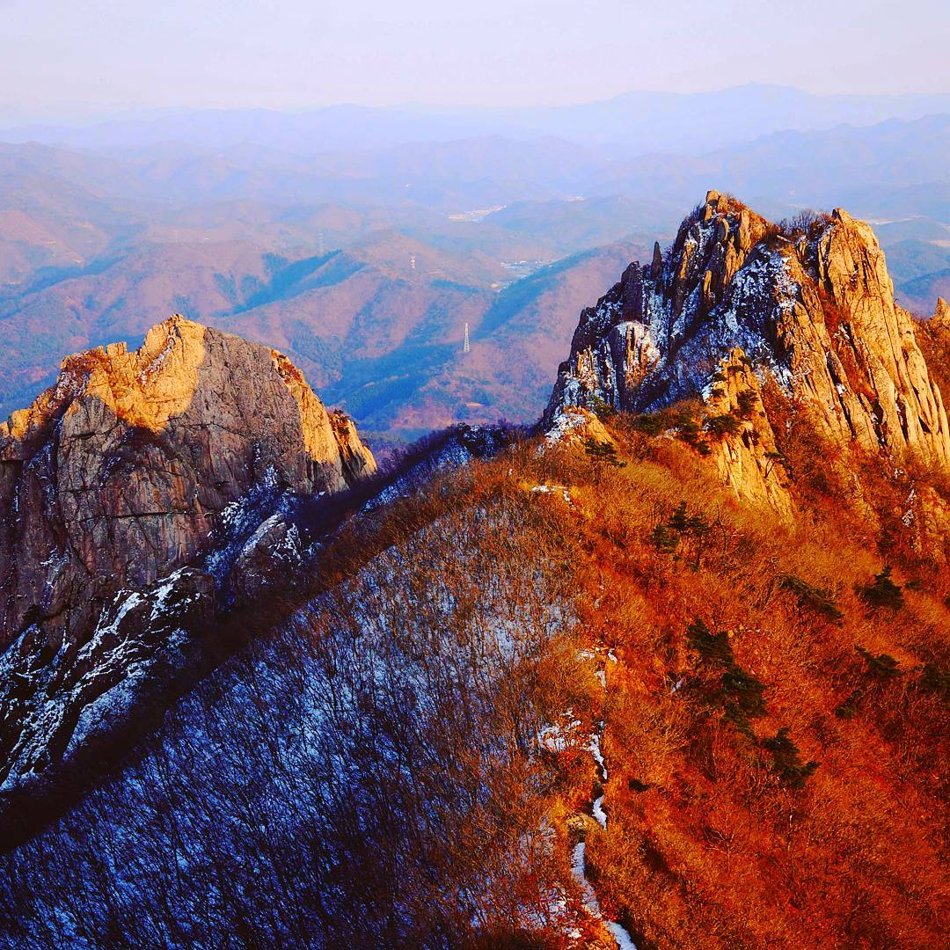
Image credit: @roamingaroundtheworld via Instagram
Hike difficulty: Medium
Distance: 9.4km
Time needed: ~6 hours
Admission: Free
Address: 280-43, Cheonhwangsa-ro, Yeongam-gun, Jeollanam-do
Park hours: 24 Hours, Daily (Closed between 2nd Mar-30th Apr and 15 Nov-15 Nov due to the park’s seasonal forest fire watches)
Getting there: Wolchulsan is best accessed by car.
Mountains to hike in South Korea
When it comes to mountains, the first thing that comes to mind might be the Alps, Andes or perhaps the Himalayas. But if you’re looking for somewhere nearby for your hiking fix, look no further than South Korea. Filled with so many mountains, you could say the task of climbing them all is insurmountable. *wink*
Korean hikers are also super friendly and often share snacks like oranges and kimbap (rice seaweed rolls) with strangers while hiking. If you’d like to make some new friends, bring some extra snacks to share.
Check out these guides in you’re travelling to South Korea:
Cover image adapted from: @world.everywhere, @thereshegoesagn, @eleven_tang via Instagram
Originally published on 10th July 2019. Last updated by Raewyn Koh on 2nd June 2024.
